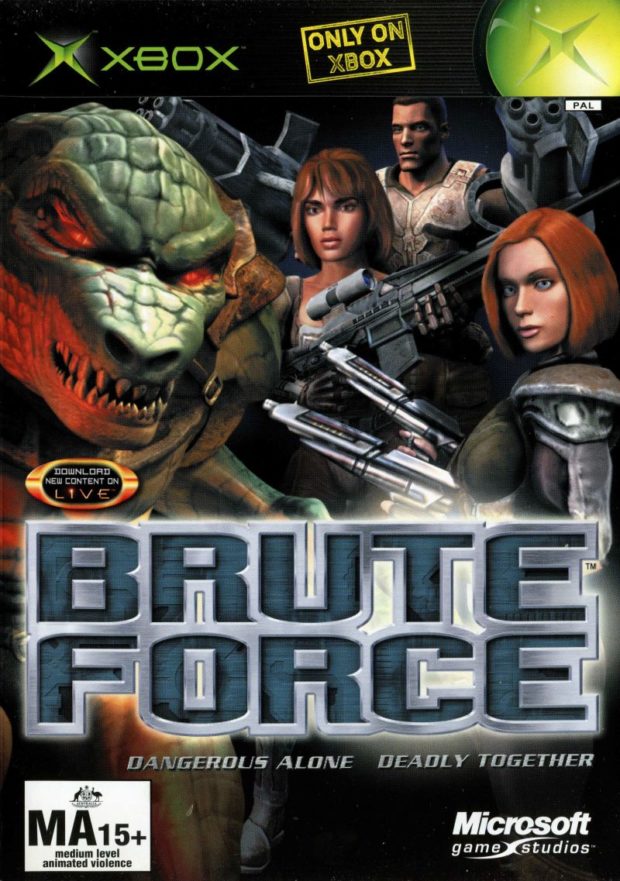
 The original Xbox originally released on November 15th, 2001 was a powerhouse of first-rate exclusives. Star Wars Knights of the Old Republic, Fable, and Halo 2 were just a few of the many titles that helped bring Microsoft into the home console market. These games not only made Xbox a staple in the gaming community but they also set the standard for what each of their respective genres could do as an art form. But there were also those rare titles that never received their fair share of praise. Those few games that although were critical hits, were commercial flops. Here are just a few of the hidden gems that the original Xbox had to offer.
The original Xbox originally released on November 15th, 2001 was a powerhouse of first-rate exclusives. Star Wars Knights of the Old Republic, Fable, and Halo 2 were just a few of the many titles that helped bring Microsoft into the home console market. These games not only made Xbox a staple in the gaming community but they also set the standard for what each of their respective genres could do as an art form. But there were also those rare titles that never received their fair share of praise. Those few games that although were critical hits, were commercial flops. Here are just a few of the hidden gems that the original Xbox had to offer.Â
Brute Force (2003)
An Xbox exclusive developed by Microsoft Studios, Brute Force was an exceptional third-person shooter for its time. With its cast of 4 characters to choose from and tight controls, Brute Force was a cross between Contra and Gears of War. The story takes place in the year 2340, and the human race has been spread across the galaxy on 50 different planets called the “known worlds”. It is up to and your team of guns for hire to track down a crashed federal ship and look for the surviving members of alpha team Hawk. The beauty of Brute Force is your ability to choose from four unique and distinct mercenaries as they make there way across these 50 known core worlds. Brute Force received much hype and praise from critics upon the time of its release but ultimately failed to capture the public imagination. Initially outselling Halo on its first week of release, Brute Force is a series that Microsoft should return to on its current generation console, considering the company’s lack of exclusives in the modern era.
Â
Dungeons and Dragons Heroes (2003)
A hack and slash title to the fullest, Dungeons and Dragons Heroes was a sleeper on the original Xbox. Released by none other then Atari Games, D&D allows players to choose between four main character classes: A Dwarf, Halfling Rogue, Elf Wizard, and a Human fighter. Each class has its own specific set of skills that lends the game a sense of replayability. The game’s plot centers on a sect of evil clerics who seek to bring back the malevolent powers of the evil witch Kaedin and destroy the worldly dimensions for all eternity. But while all these evil deeds are unfolding, a sect of good mages resurrect the ancient fallen titular heroes to combat Kaedin’s return in order to restore peace to the realms of D&D. While plot heavy, the said game is thick with hack and slash combat that even gives the Baldur’s Gate series a run for its money. Competing at the time mainly with the Final Fantasy franchise on the home console market, Dungeons, and Dragons Heroes is definitely worth revisiting. This is evident now more than ever considering that other series like Elder Scrolls have built their very existence on the groundwork laid out by the Dungeons and Dragons series so many years before.
Â
Nightcaster (2001)
Not necessarily a great game in respect to its game design, Nightcaster holds a special place in the world of gaming because it achieved everything that Quest 64 failed to do years before. Developed by Microsoft Studios, Nightcaster centers on the titular wizard named Arran living in a small medieval-style village. One day while venturing into the forbidden forest, Arran comes across a magical orb who tells the aspiring wizard of his destiny to fight an evil Mage known as the “Nightcaster” and prevent his reign of terror from spreading across the land. The plot progresses rapidly over twenty years and the protagonist is now in his mid-twenties living in a world devoid of light. The game focuses mainly on the main character and his magical abilities, meaning that there are very few NPC’s he comes across throughout his journey. This was one of the main criticisms of the game, as most RPG worlds are built around character interactions and multiplayer questing. Definitely not one of the best on the system, but certainly not the worst, Nightcaster is a hidden gem despite its rough patches.
Â
Call of Cthulhu Dark Corners of the Earth (2005)
Released at the end of the original Xbox’s lifespan, Call of Cthulhu was the brainchild of horror writer H.P. Lovecraft and Bethesda studios. This first-person shooter horror hybrid is a brilliant send off for Microsoft’s first foray into the console market. Set in Pre World War I America, the plot centers on police detective Jack Walters and his descent into madness in a decrepit manor just outside Boston, Massachusetts. The game’s focus rests mostly on the notions of madness and this one character’s struggle with the macabre. Not surprising considering the game is based on the classic series of books by Victorian Era horror writer H.P. Lovecraft. Utilizing the power of the Xbox console, Call of Cthulhu epitomized everything that the horror masterworks of previous generations had done years prior to its release. Implementing a sense of altered reality, the game brilliantly implements a non-HUD design during gameplay, rendering a more realistic feel during action sequences. In retrospect, this design decision was a brilliant move when emphasizing the visual nature of the world design as compared to other FPS’s like Call of Duty and Medal of Honor which focused heavily on HUD and skill points. A critical bombshell in 2005, selling only 5,000 copies, the titular title has now become a sought-after gem for retro gaming collectors.
Â
Enclave (2002)
Developed by the now-defunct Starbreeze Studios, Enclave was a PC inspired third person hack and slash RPG. Throughout the game, players can choose between a cast of different characters with each altering the world of the story. Utilizing a wide array medieval weaponry and enchantments, Enclave’s opening feels more like Fable then an Elder Scrolls clone with its storybook world design and fluid battle system. The diegesis of the game unfolds over a succession of mission-based chapters with the protagonist achieving specific goals in order to progress through each quest. The brilliance of Enclave was that it allowed players to choose between a light and dark side campaign that was as distinct and varied as the game’s mission-based quest system. Although Enclave is not a well-known title nor a franchise even, it still ranks as one of Xbox’s most unique RPGs of its era. During its battle sequences, one can see how the extent of this game’s uniqueness with its alternation between third person swordplay and first-person crossbow shooting mechanics. Enclave bridged the gap between the gap between PC gaming and the home console Role Playing experience. Definitely, a must play, Enclave has since been re-released on Steam in 2017 featuring new cinematics and polished graphics.
Â
The Xbox Lives On
Microsoft’s first entry into the world of console gaming was a monumental moment in video game history. With its broad range of exclusives, high definition graphics, and online services, the Xbox proved to everyone that gaming from home can still bring players together across its very much imitated Live marketplace. The Xbox had its blunders for sure, but its very essence was defined by those noncommercial titles that seemed to exist solely for artistic reasons rather than fiscal incentives. While other companies like Sony were searching for the next JRPG to cash in on the Final Fantasy gravy train, Microsoft was concerned more with creating new franchises and bringing the PC experience home to a new section of gamers who otherwise ignored computer-based gaming. Those few above-mentioned titles merely scratch the surface of what the Xbox was truly all about. With retro gaming in full swing, and collectors scrambling all over to find relics from the past, the original Xbox is the breeding ground for first-rate exclusive material. Although it did not win the sixth generation console war, the Xbox did not have the reliance that the PlayStation 2 had on its predecessor. The Xbox was new in every sense of the word. It did not have past franchises to harken back to nor would it want to. Microsoft was at a time a company that inspired new ways to look at story-driven gameplay, a shame really when one considers how far the developers have strayed from their origins set forth over a decade ago.


Leave a Reply